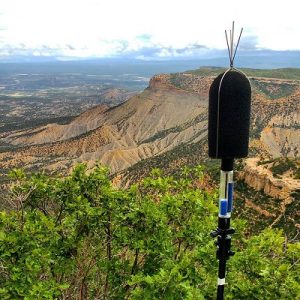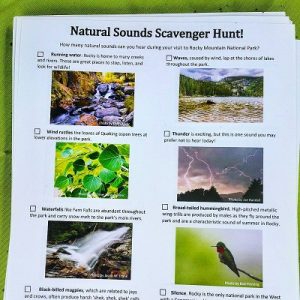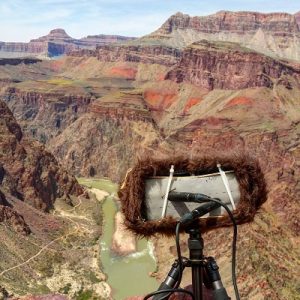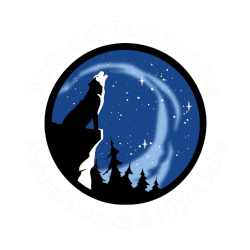Sound and Light Ecology Team
We are a team of scientists and educators working to understand the effects of noise and light pollution on ecological processes and organisms, share our discoveries with the public, and preserve the natural sounds and night skies of the world.
Who are we?
We are a team of scientists and educators working to understand the effects of noise and light pollution on ecological processes, inform the public about the importance of sound and light and its impact on wildlife and people, and preserve the natural sounds and night skies of the world.
Our research team was formed in 2007 as a collaboration between the Natural Sounds & Night Skies Division of the National Park Service and the Fish, Wildlife, and Conservation Biology and Biology departments at Colorado State University. We work primarily on the campus of Colorado State University and at the Natural Resource Stewardship and Science Directorate office of the National Park Service in Fort Collins, Colorado.
Visit our Team page to learn more about us.
Research
Education & Outreach
Field Recording
Primary research objectives
Our overarching research goal is to further our understanding of how noise and light pollution affect ecological processes, with a focus on wildlife. Our research backgrounds are quite diverse and is reflected in the multiple approaches we take to study these sources of pollution. Our current areas of research include:
Modeling sound propagation across landscapes
We are studying the impacts of noise from different sources, such as recreational activities, traffic, and energy development. We also simulate how noise spreads through a landscape using computer models. To that end, we are updating and validating the computer models SPreAD-GIS and NMSim. We aim to use these updated tools to understand the impact of noise on wildlife, especially species of conservation concern.
Understanding soundscapes at a continental scale
Using hundreds of thousands of hours of NPS audio recordings and cutting-edge spatial modeling techniques, we can predict the impact of human-caused noise across the entire United States. By predicting noise levels across the country, we can summarize noise pollution in even the most remote locations, including wilderness areas or critical habitat for sensitive species. This technique brings us one step closer to managing noise pollution in protected natural areas.
Investigating anthropogenic noise impacts wildlife
We are exploring the ways that anthropogenic noise affects the behavior of free-ranging prairie dogs, a keystone species in North American prairie ecosystems. Our goal is to determine whether noise is perceived as a form of predation risk, elicits an increase in antipredator behavior, distracts animals from detecting predators, and/or masks the sounds of predators and conspecific vocalizations.
We are also examining how intense, acute noise events affect bird and bat communities in parks. Wildlife communities in busier national parks are already subjected to daily disruption by human recreation. Moreover, occasional noisy events, such as fireworks or motorcycle rallies, may exacerbate threats on already stressed communities of animals. For instance, we found short- and long-term behavioral responses of bird and mammal communities in Devil’s Tower National Monument to the Sturgis motorcycle rally, one of the largest motorcycle rallies that comes through the park each year.
Energy development and soundscape ecology
We are conducting a study investigating the effects of peaks and lows of energy development on soundscapes and wildlife communities in northwestern Colorado. The project employs acoustic monitors to record natural and anthropogenic sounds in a landscape that historically underwent intensive energy development. Concurrently, remote-triggered cameras and GPS telemetry are monitoring wildlife activity, allowing for evaluation of animal responses to noises generated by energy infrastructure, including drilling pads and roads. More recently, development and associated human activity have declined dramatically with low oil prices. We are examining how changes in the intensity of human activity affect soundscapes and animal communities as a whole.
Education and outreach
We firmly believe in communicating the findings and importance of our work with the scientific community and the public at large. As such, we have taken different approaches to do this. Additionally, we welcome collaborations with others to establish impactful education and outreach programs and events. Several members of our team have interests and experience in developing and managing outreach programs and events, and we are currently working on establishing others for the future. Feel free to contact us with your ideas!
welcome collaborations with others to establish impactful education and outreach programs and events. Several members of our team have interests and experience in developing and managing outreach programs and events, and we are currently working on establishing others for the future. Feel free to contact us with your ideas!
Below are links to programs, events, & projects in which we have participated in and/or led, or are currently working on:
Field Recording
A soundscape consists of all of the natural sounds made by living organisms (e.g., birds, amphibians, insects) and non-living elements and processes (e.g., rain, thunder, wind) that are perceived by  humans. A soundscape may also include non-natural sounds (i.e. human-caused noise). The world is experiencing unprecedented changes due to climate change, habitat transformation, and human population growth, which are in turn significantly altering soundscapes around the globe. Especially alarming is the rapidly increasing ratio of human-caused noise to natural sounds, and the loss of natural quiet. In response, we are working to collect recordings of natural sounds and soundscapes in order to answer questions about how natural soundscapes operate, provide a resource for others interested in soundscape research and community outreach, and share their intrinsic beauty with the world.
humans. A soundscape may also include non-natural sounds (i.e. human-caused noise). The world is experiencing unprecedented changes due to climate change, habitat transformation, and human population growth, which are in turn significantly altering soundscapes around the globe. Especially alarming is the rapidly increasing ratio of human-caused noise to natural sounds, and the loss of natural quiet. In response, we are working to collect recordings of natural sounds and soundscapes in order to answer questions about how natural soundscapes operate, provide a resource for others interested in soundscape research and community outreach, and share their intrinsic beauty with the world.
One of our members, Dr. Jacob Job, is building a library of natural sounds from around the country and world as part of his work with our team. His recordings are featured in online story maps and sound libraries, and in national park visitor centers.
Check out our 'Sounds of the Parks' page to explore some of this work and listen to a few of these recordings!

